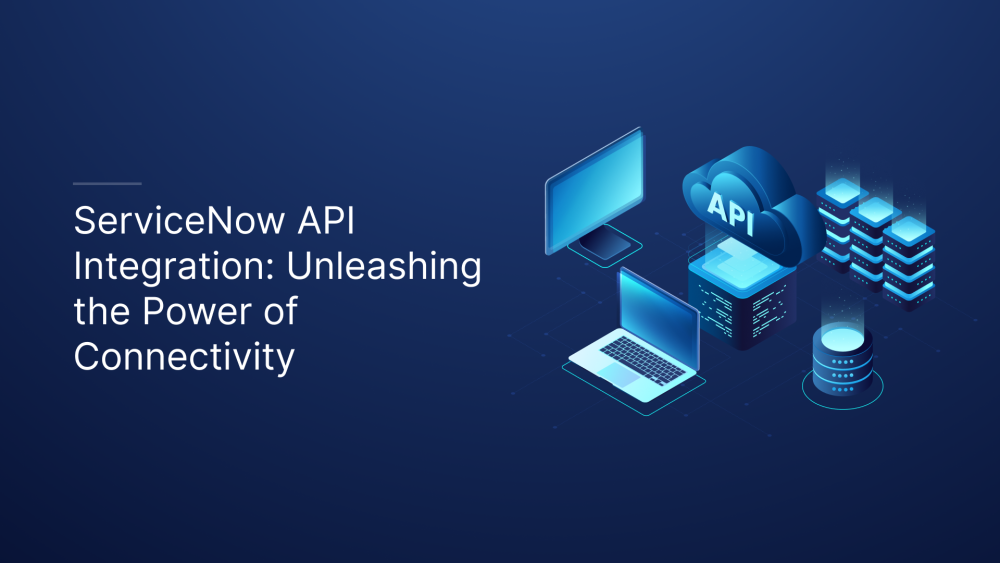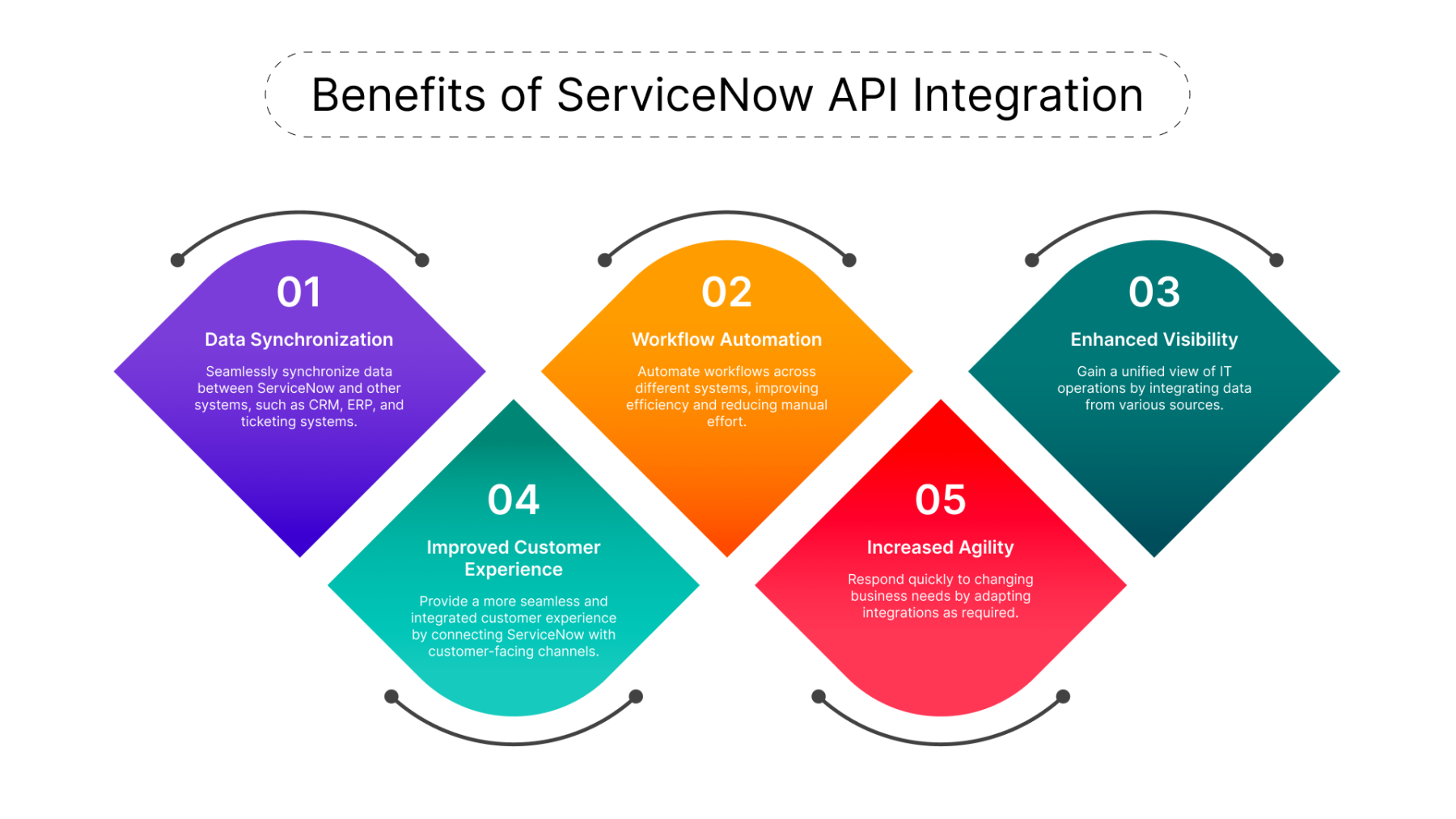ServiceNow, a leading platform for IT Service Management (ITSM), offers robust APIs – REST and SOAP – to facilitate seamless integration with other systems. These APIs enable organizations to connect ServiceNow with a wide range of tools, including CRM, ERP, ticketing systems, and other IT infrastructure components. This integration enhances operational efficiency, improves data consistency, and provides a unified view of IT operations.
Understanding ServiceNow APIs
-
REST (Representational State Transfer) API:
-
Utilizes HTTP methods (GET, POST, PUT, DELETE) to interact with ServiceNow resources.
-
Offers a more modern and flexible approach to API development.
-
Commonly used for modern integrations and API-first architectures.
-
SOAP (Simple Object Access Protocol):
-
A more traditional protocol based on XML for exchanging data between applications.
-
While still supported, REST API is generally preferred for new integrations.
Benefits of ServiceNow API Integration
-
Data Synchronization: Seamlessly synchronize data between ServiceNow and other systems, such as CRM, ERP, and ticketing systems.
-
Workflow Automation: Automate workflows across different systems, improving efficiency and reducing manual effort.
-
Enhanced Visibility: Gain a unified view of IT operations by integrating data from various sources.
-
Improved Customer Experience: Provide a more seamless and integrated customer experience by connecting ServiceNow with customer-facing channels.
-
Increased Agility: Respond quickly to changing business needs by adapting integrations as required.
Integrating with ServiceNow APIs
1. Authentication: * Obtain necessary credentials (e.g., API keys, OAuth tokens) for authentication. * Implement appropriate security measures to protect API keys.
2. API Calls: * Construct API requests using the appropriate HTTP methods and data formats (JSON for REST, XML for SOAP). * Utilize ServiceNow's API documentation to understand available endpoints and parameters. * Handle API responses, including success and error conditions.
3. Data Mapping: * Map data fields between ServiceNow and the target system to ensure data consistency. * Transform data as needed to meet the requirements of the target system.
4. Error Handling and Logging: * Implement robust error handling mechanisms to gracefully handle API errors and exceptions. * Log API calls and responses for debugging and troubleshooting.
Example (REST API):
JavaScript
const url = 'https://<instance_name>.service-now.com/api/now/table/incident';
const headers = {
'Authorization': `Basic ${Buffer.from(`${username}:${password}`).toString('base64')}`,
'Content-Type': 'application/json'
};
const data = {
"short_description": "Incident created via API",
"assignment_group": "it_support"
};
const options = {
method: 'POST',
headers: headers,
body: JSON.stringify(data)
};
fetch(url, options)
.then(response => response.json())
.then(data => console.log(data))
.catch(error => console.error('Error:', error));
Use Cases for ServiceNow API Integration
-
IT Service Management: Integrate with ITSM tools to automate incident management, problem resolution, and change management processes.
-
CRM Integration: Integrate with CRM systems to synchronize customer data and improve customer service.
-
ERP Integration: Integrate with ERP systems to streamline order fulfillment, procurement, and inventory management.
-
Third-Party Integrations: Integrate with third-party applications, such as security tools, monitoring systems, and collaboration platforms.
Challenges and Considerations
-
API Rate Limits: Be mindful of API rate limits to avoid exceeding usage quotas.
-
Security: Implement robust security measures to protect sensitive data.
-
Error Handling: Implement effective error handling mechanisms to prevent disruptions.
-
Maintenance: Ongoing maintenance may be required to ensure the continued functionality of integrations.
Conclusion
ServiceNow's REST and SOAP APIs provide a powerful mechanism for integrating with other systems and extending the platform's capabilities. By leveraging these APIs, organizations can streamline operations, improve efficiency, and gain valuable insights from their data.



